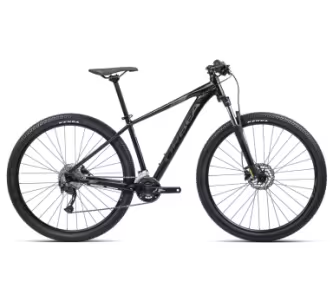
Classic Bikes Dutch Bike
A Dutch bike is a traditional bicycle model that originated in the Netherlands and is often associated with a characteristic design and a relaxed riding position. Many people appreciate the traditional style and timeless elegance of a Dutch bike, especially for everyday use.
21643 Dutch Bikes


Velodeville C60

Mustang Other

Bixs Sign 220 Mariposa

SPECIALIZED Tarmac Sport

SPECIALIZED Tarmac Comp Carbon

Cresta Unica

UNIVEGA RAM TR 626

SPECIALIZED S-Works Venge ViAS

Other Other

SPECIALIZED Shiv Pro - Ultegra Di2

SPECIALIZED Shiv T Comp M2

Knolly Podium

TREK Domane+ LT

Bianchi Aria E-Road

SPECIALIZED Hotwalk

Naloo CHAMELEON Mk2

Other Other

MTB CYCLETECH Slick

Orbea MX 50

Orbea MX 40

BMC TIMEMACHINE 02 THREE

City Cycles Jive

City Cycles Jive
Buying advice for: City / Urban: Lifestyle: Dutch Bike
Frame material
Dutch bikes often have a characteristic frame with a low step-through that makes it easier to get on and off the bike. The frame is usually robust and sturdily constructed. Steel frames are known for their robustness and durability. They can absorb shocks and vibrations well, making them ideal for everyday use and transporting heavy loads. Steel frames offer a comfortable and smooth ride. They absorb bumps in the road well, which contributes to a more comfortable riding experience, especially on longer journeys. In rare cases, Dutch bikes can also be equipped with a carbon frame, but this is rather uncommon.
Chassis
Traditional Dutch bikes generally do not have specific suspension in the sense of shocks or suspension forks, as is common on mountain bikes or off-road bikes. Instead, Dutch bikes rely on other features of their design to provide comfort and ride quality. Dutch bikes often use wide tyres with a higher air volume, which helps to absorb shocks from uneven roads or potholes and ensure a smoother ride.
Wheels
The rim is the outer ring of the wheel that holds the tyres. It can be made of aluminium or steel and has a U-shaped or hollow chamber structure. The rim must be strong enough to support the weight of the bike and the rider, while being light enough to allow an efficient ride. Most Dutch wheel spokes are made of stainless steel or another corrosion-resistant material.
Tyres
Dutch bikes typically use tyres ranging in size from 26 inches to 28 inches, depending on the size of the bike and the specific model. Tyre size can affect the handling characteristics of the bike, with larger tyres usually offering a smoother ride. The tread pattern of the tyres varies depending on the intended use of the Dutch bike. For urban use or riding on paved roads, smooth or lightly treaded tyres are often preferred, offering low rolling resistance and good traction on firm surfaces. The width of the tyres can also vary and influences the handling of the bike. Wider tyres generally offer more comfort as they absorb bumps better and have a larger contact area. Narrower tyres, on the other hand, can enable faster acceleration and better manoeuvrability.
Brakes
Dutch bikes can be fitted with different types of brakes. The coaster brake is a common braking option on traditional Dutch bikes. It is an intuitive and easy-to-use braking option that is often used on Dutch bikes for urban use. Rim brakes are another popular choice for Dutch bikes. They use brake pads that press against the rim flanks to slow or stop the bike. These brakes offer good braking performance and are low maintenance, but require regular inspection and adjustment. Alternatively, drum brakes can also be used on a Dutch bike. They are a robust and weather-resistant brake option that is often found on Dutch bikes for everyday use. The drum brakes are located in the hub of the bike and are activated by operating brake levers. They offer reliable braking performance and require little maintenance. Hydraulic disc brakes can be found on high-quality Dutch bikes. These brakes offer excellent braking performance, especially in wet weather or on uneven terrain. However, they require regular maintenance and are usually more expensive than other brake options.
More interesting bikes

BMC 257 AMP AL SPEED ONE ST

Cannondale Scalpel HI-MOD Ultimate

SPECIALIZED S-Works Aethos - Dura-Ace Di2

